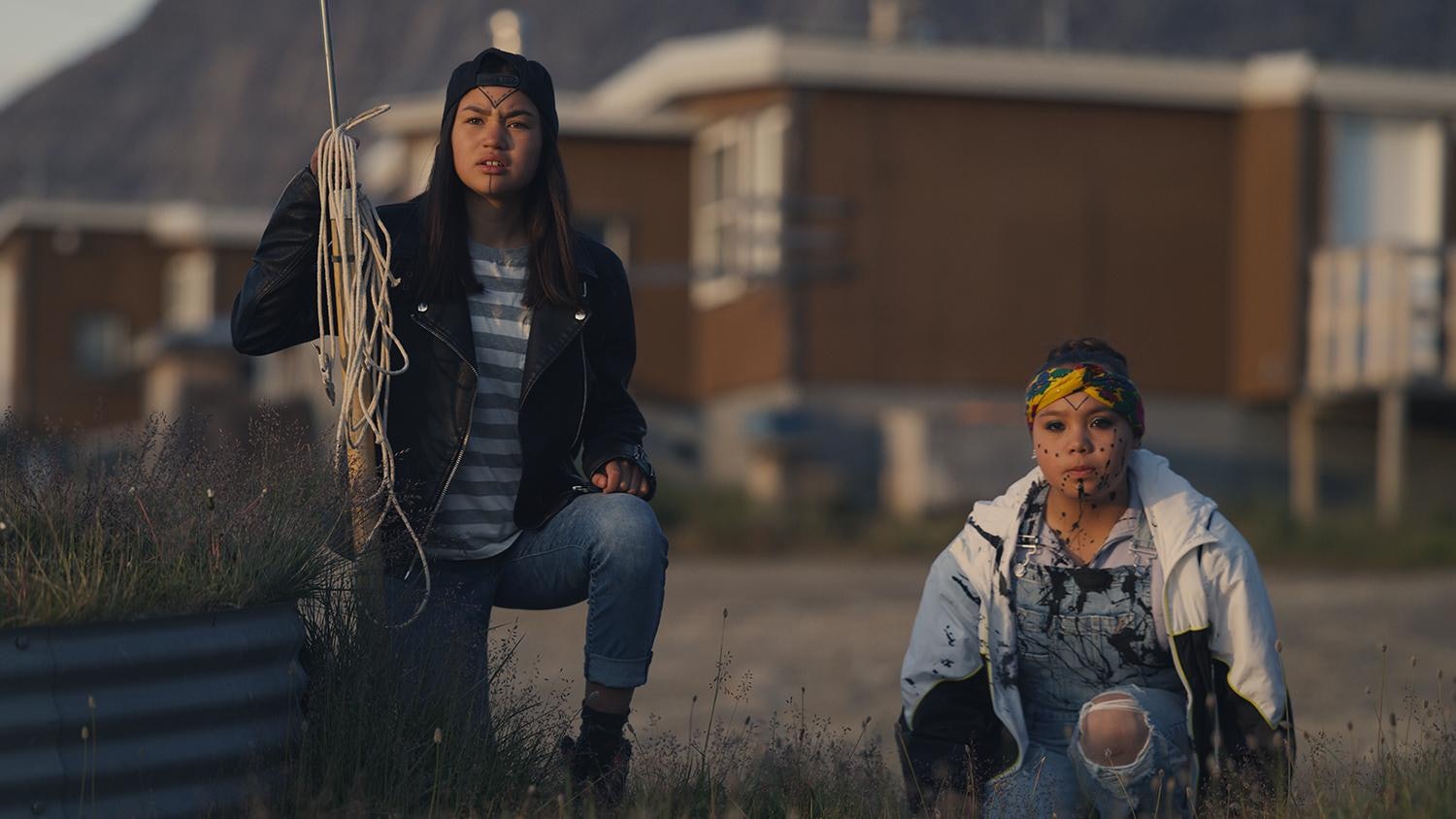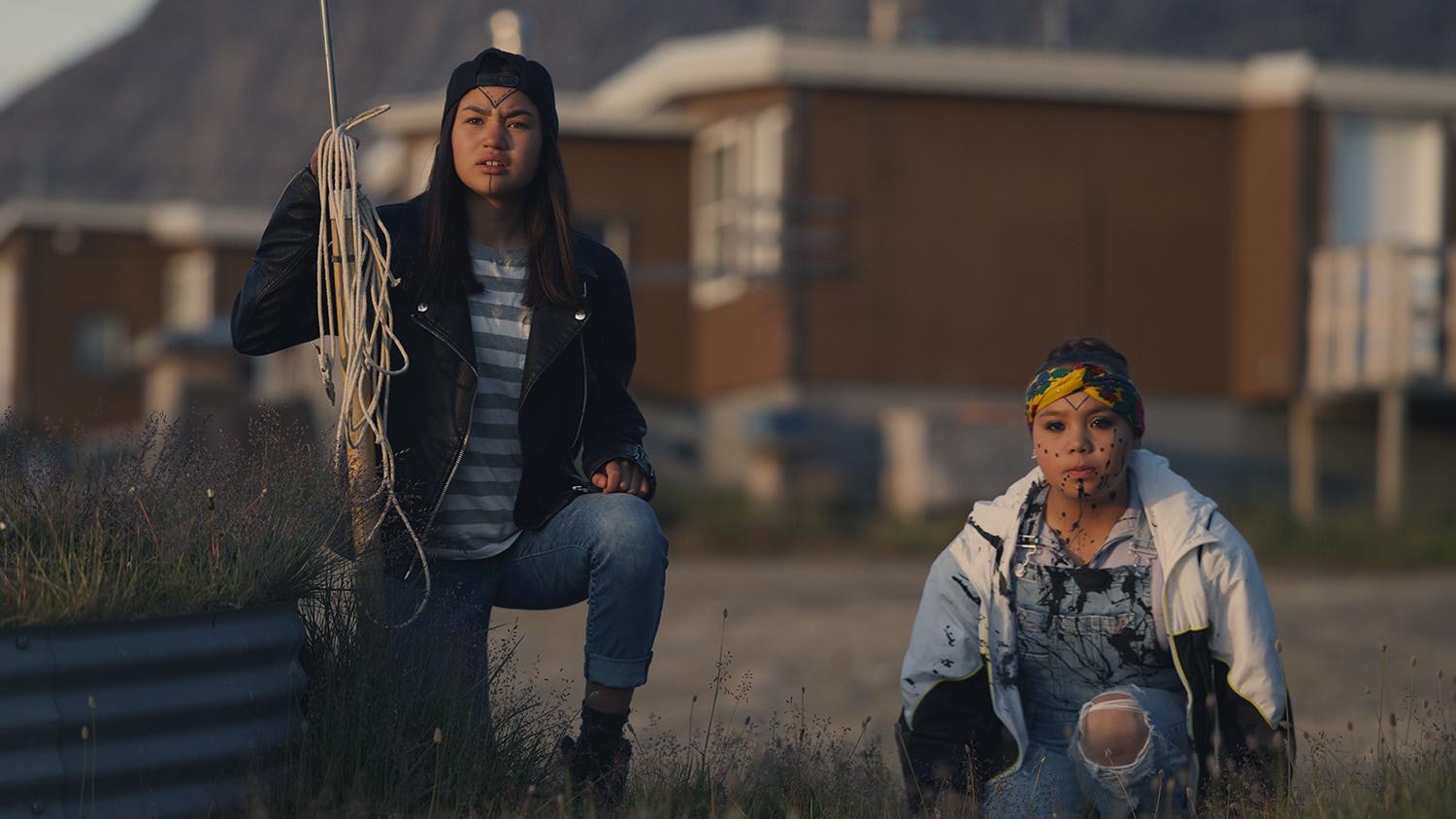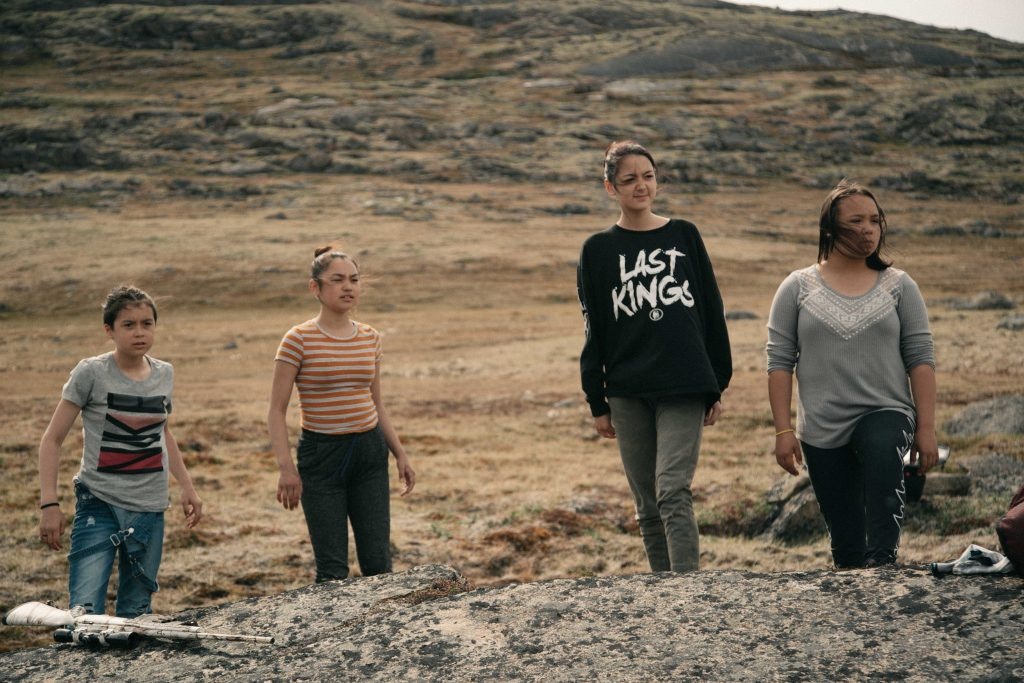
There’s an obnoxious brand of right-wing commentator that likes to complain about identity politics, as if relating to one’s heritage is a meaningless pursuit reserved for folks with nothing better to do than whine. Those people need to see Nyla Innuksuk’s feature debut Slash/Back, where identity isn’t simply a matter of who you are, where you come from, or how you live, but a tool for staying alive.
It’s right there in the opening sequence, as a father instructs his young daughter on the practical and traditional aspects of hunting. This, he tells her, is how they survive, and how their people have always survived, hunting for sustenance and income. But survival is more than putting food on the table and keeping a roof over your head. It’s the contest for life in which only the strongest and craftiest prevail, which is a lofty summarization of Slash/Back’s plot. But this isn’t a film about the human spirit’s enduring triumph over beasts and brutal weather. This is a film about kids fighting skin-stealing aliens.
Slash/Back primarily concerns two of those kids, Maika (Tasiana Shirley) and Uki (Nalajoss Ellsworth), girls from Pangnirtung, Nunavut, a remote community tucked in the bosom of the Baffin Islands. Uki maintains an unshakeable connection to her Inuit roots. Maika, the child from the introduction now in teenhood, is embarrassed by Uki and by her own roots, taking any chance she gets to bag on Inuit culture. They’re friends, but they disagree on the value of their background.
Innuksuk grounds the film’s stakes in Maika’s clashes with Uki, which sets the stage for a squirmy extraterrestrial invasion. Maika cajoles Uki and their pals, Jesse (Alexis Vincent-Wolfe) and Leena (Chelsea Pruksy), into taking an unsanctioned boat ride out of town, where they wind up in a pickle: A polar bear runs them down and tackles Maika’s little sister, Aju (Frankie Vincent-Wolfe).
The good news: Maika shoots the bear and saves Aju. The bad news: It isn’t a bear, but a disgusting tentacular alien squirming around in the bear’s hulking carcass, which brings us to the worst news: The alien brought friends.
Slash/Back hangs halfway between meta horror and plain-old horror; it isn’t a horror movie about horror movies, but Uki watches enough horror that she’s savvy to their particulars. Notably, she happens to be a big John Carpenter fan with a fondness for The Thing. Innuksuk clearly digs that masterpiece herself, but she doesn’t rely on it as either the sole reference point or basic framework for the story she tells in Slash/Back. It’s a piece of the picture, but not the picture itself. She gets away from that influence quickly, moving on to others, then others, with such personal vision that none of them overpower.

This means Slash/Back does its own thing instead of being Attack the Block by way of The Thing by way of Blood Glacier by way of Grabbers. It’s nice knowing what kind of movies Innuksuk and her characters like. It’s nicer knowing how those movies change when filtered through their cultural lens.
In Slash/Back, Innuksuk presents Inuit mores and beliefs with wholehearted pride first, then starts indulging her love of genre after. First we see Maika on the water with her dad, then a scientist on a snowmobile doomed to a messy death while collecting field data. It’s a literalization of Innuksuk’s driving theme: The scientist lacks the locals’ survivalism, and he pays for it.
At least he dies in a scenic spot. Innuksuk and cinematographer Guy Godfree take special care in filming Pangnirtung’s landscapes, partially because no one’s ever made a movie there before and partially because the landscapes are integral to shaping Innuksuk’s aesthetic. Nunavut is a beautiful, forbidding place, serene to the eye and perilous to the body. Godfree treats the setting as a character unto itself, lingering on shots of Cumberland Sound and the Baffin Mountains like he’s giving the environment the final say.
He’s poking at our paranoia centers, too. The longer he hangs on an image, the likelier we are to scan every frame for proof of alien activity. Once in a while, we find it. The rest of the time the effect pays off by constantly stoking our unease. It’s a terrific device, and a chief source of Slash/Back’s dread.

Supplying the film’s heart is the cast, particularly Shirley and Ellsworth, with whom we spend the bulk of our time and to whom Innuksuk accords the most development. Both Maika and Uki are more grown up than their ages suggest — Pangnirtung’s adults appear to not pay them much mind when they’re out of sight — but no one’s ever the right age to tangle with body snatchers.
Shirley dramatizes Maika’s journey from modernism back to her upbringing, while Ellsworth plays Uki as more brassbound. Slash/Back reads as advocacy for her pro-Inuit stance, but the film understands Maika’s jaded apathy too. It can’t be easy feeling so removed from the rest of the world at 16.
Occasionally, hesitancy creeps into Slash/Back’s performances, as if the cast is uncomfortable in front of the camera. Given that Innuksuk is trying something new in an area unaccustomed to the presence of professional film crews, this is understandable. Besides, intermittently halting acting doesn’t throw off the film’s rhythm, because the cast’s commitment to the material stays as visible as Pangnirtung’s 24 hour sunlight. Taken this way, Slash/Back feels like its own triumph, small and humble but wholly honest, with enough goopy effects, gross-out gags, and scares to make this midnighter’s holistic identity worth celebrating.
Slash/Back debuted at South by Southwest 2022.







